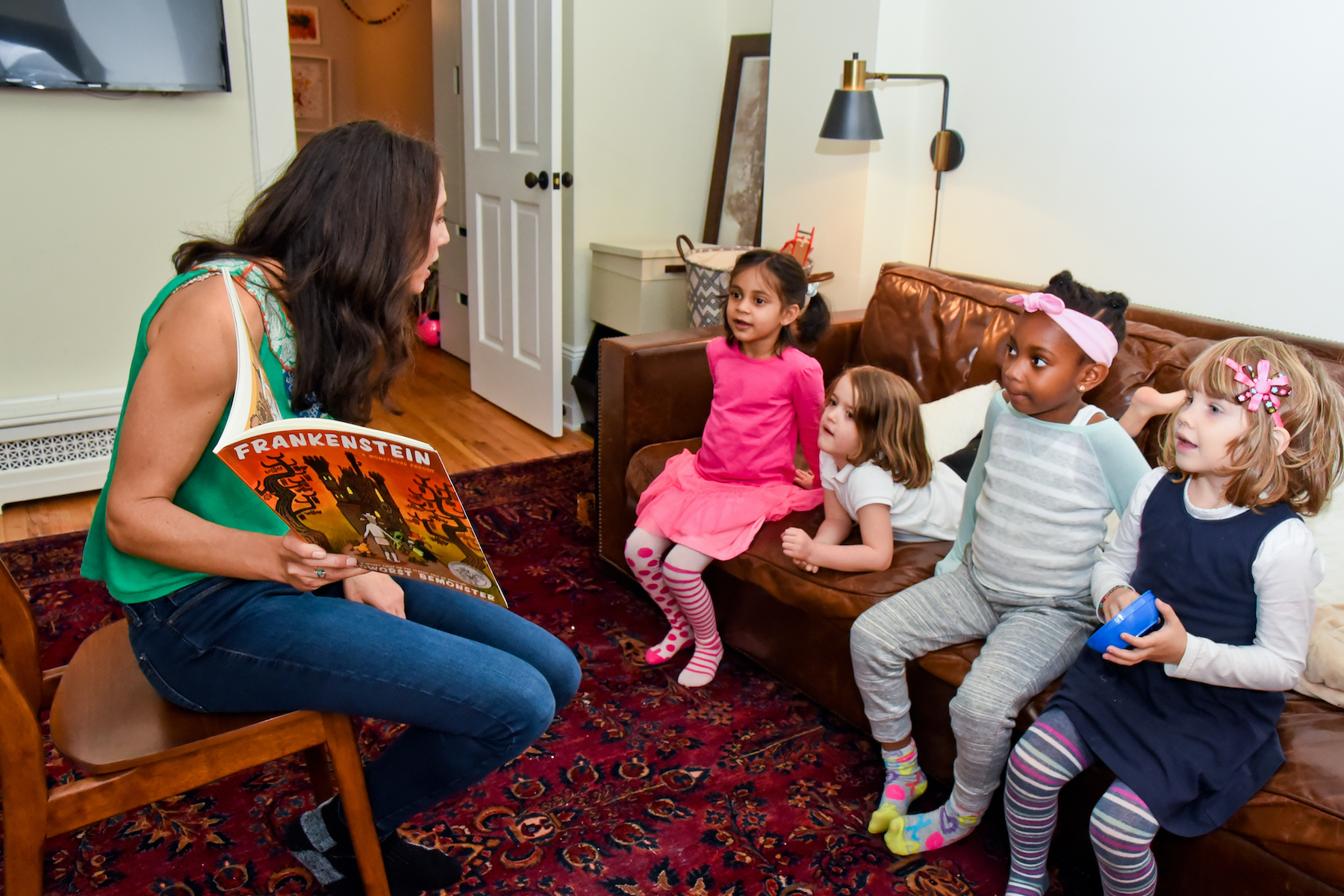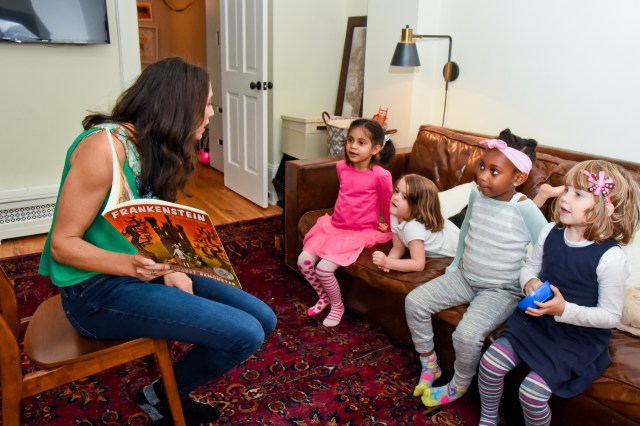
There’s a light at the end of this pandemic tunnel…some days I even need sunglasses! But regardless of how much things may be coming back to “normal,” that languishing feeling can still abound. To help combat the pandemic-induced brain fog, I turn to storytelling games.
Storytelling can be your parenting secret weapon: When you engage your kids with a story, you get perspective and insight into what is important to them. Maybe they make a story about a dragon that gets excluded or a superhero that gets sick. There’s an opportunity there to listen. Through storytelling games, we can give space to our kids to express themselves and share what’s going on.
I love storytelling games because they can:
-
Energize the simplest of routines
-
Support bonding & connection
-
Build social-emotional learning
-
Boost executive function skills
-
Encourage creativity in unexpected ways
Playing storytelling games gives kids:
-
Space to develop their voice
-
Tools to make then replicate the games and make their own stories independently
-
Bonding time with you and/or their sibling
Lose your inhibitions about storytelling – just start and let your kids pick up the rest but if you need, here’s a basic recipe for stories:
All Stories Have:
1. Characters
2. Setting
3. Conflict
4. Resolution
So, to create an original story—name a character or two, decide on a location and create a problem. You don’t need it all figured out before you start. The story often will tell itself, and many of these games rely on collaboration. Let go and trust that some kind of resolve will happen!
You Can Play Storytelling Games Anywhere
It can feel overwhelming to think that you have to find more time to play. Guess what? It is there. The possibilities for storytelling exist…when you are in line at the store or walking to school. How about waiting for the playdate at the playground or at the dinner table? There are opportunities to inject these games into the most enervating moments to add that spark and whimsy that we are craving as we crawl our way through the pandemic. For loads of game inspiration, check out our Instagram page.
The One Word Story
Tell a story one word at a time. Each player can only say one word at a time. Go around and try to tell one cohesive story. It is challenging and inevitably funny! This is a playful way to practice impulse control and also just good silly fun! Learn more about the mindfulness benefits of this game and get more tips on how to play here.
Fortunately, Unfortunately
In this game, players build on a single story adding in peaks and valleys into the narrative. They alternate the way they start their contribution with either the word, “Fortunately” or “Unfortunately.” I like to start neutrally, with “Once upon a time” and then build in the alternating words from there. You’ll get automatic drama from those transition words. You can decide ahead of time how many contributions you’ll get so that the story has an endpoint (“We’ll do 5 turns and then you make one up on your own”). This scaffolding is super helpful—I speak from experience—so that the game has a conclusion and you have an out!
The Sound Story
Tell a simple story, add in sounds (like environment noises or exclamations) and then strip away all the words and just leave the sound. See if you can boil it down to 5 essential sounds, which you make while you tell the story. Then tell the story again only using sounds!
The Story Clap
Take turns telling a story, clapping your way from one player to the next. Remember the story recipe (location+characters+conflict). Draw inspiration from books you read. Making a prequel or a sequel to your favorite story is also an awesome place to start. Learn more about how Story Clap works.
Storytelling Games to Get through Parenting Challenges
Sometimes you can circumvent challenging parenting moments by creating a joyful distraction of a story. Or when asking your kid to step out of their comfort zone. Anytime that you are asking kids to do something hard, storytelling comes in handy. Literature abounds with examples of characters that do hard things. Whether The Little Engine That Could or Bumblebee Girl, you can find a character that your child relates to and imagine as if you were them, doing the task at hand.
Nail Trimming & Teeth-Brushing
I like to tell a story in sections, during these most mundane—but necessary—of parentally supervised hygiene tasks. I recommend Chompers, a story podcast expressly for teeth-brushing! When nail-trimming too, I ask my son to pick a location and a character and I start in with the clippers and the story. It doesn’t matter if it makes sense. It’s both a distraction and connection during an otherwise annoying task.
At the Dinner Table
Tell a quick story about the dinosaur that ate the tree…and then your kid becomes the dino, and the broccoli is eaten…maybe! I love to use games like Magic Stew to inspire bravery at the table.
Storytelling at Bedtime
But of course! However obvious it seems to tell a story at bedtime—it can certainly be draining on you. Additionally, too much kid involvement has the opposite effect on relaxation—so my suggestion here is to keep it simple. Set limits, like a timer for the length you want to tell the story, knowing that you can always pick up with the “next installment” tomorrow. Once you know the parameters, ask for input: location, characters, what’s the problem? Then, get cooking on the classic story recipe and let inspiration do the rest!











